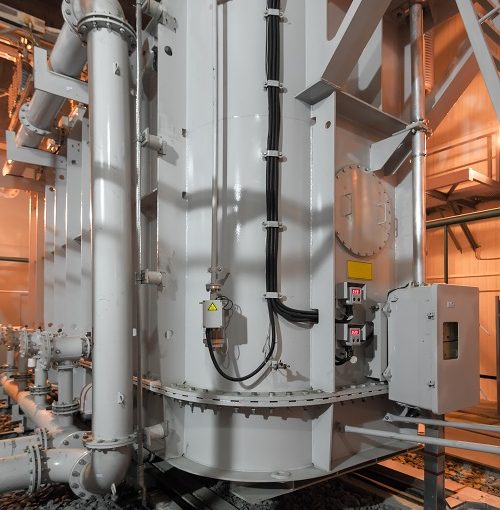High heat, as well as temperature fluctuations can make a huge impact on any surface that has to work in such conditions. With many industries relying on higher temperatures for some of their processes, creating heat-resistant paints that can help keep appliances and structures safe is key. How do they work, what types of paints are used for heat-resistance and where are they mostly applied?
How heat-resistant paints work?
If any surface should be exposed to high heat or quick temperature changes, protecting it against that with heat-resistant paints must be considered at all times.
Such protection requires properly analysing the environment and all risk factors that come in contact with the surface and then choosing the right type of heat-resistant paint to apply and reapply as a part of regular surface maintenance. It’s especially important in industries where heat is not the only challenging factor and abrasion or corrosion can weaken the heat-resistant coating itself.
As a rule, good quality heat resistant paint should tolerate temperatures up to 600 °C, but they can be adjusted for lower temperatures if there’s no need for such a high threshold. They shouldn’t have any negative reactions with other protective industrial coatings used for steel, metal, concrete and other surfaces and should be able to be applied and reapplied as needed.
Applications for industrial-grade heat-resistant paints
Heat resistant powder coatings and wet paint solutions, depending on the type of paint and its properties are suitable for any industrial surfaces that are exposed to high temperatures. Examples include exposed pipelines, exhaust pipes, heat shields, stoves, grills and chimneys as well as structures used for welding, ironwork etc.
Heat-resistant powder coatings are used mostly for elements that are packaged after painting and assembly, not so much for structures used long term on production lines. It might work well for pipelines that are being assembled off-site and delivered for immediate use. The powder is fine, which gives a lot of control in terms of the thickness and finish of the heat-resistant coating.
Heat-resistant wet paint, being a more traditional method of heat protection for industrial purposes is preferred for all applications that are done on-site or where more protective coatings will be painted under the heat-protective layer. For chimneys, stoves or large surfaces, wet paint might provide more accuracy and better coverage, which is necessary for elements that work in very high heat or are subjected to frequent, big temperature changes.
Wet paint is usually thicker, which also means the protective layer will be more visible (the colour used here is most often black, so that it’s easy to see if any paint chips off).
Industrial heat protection
When high temperatures come into play, there aren’t many materials and surfaces that wouldn’t be changed in any way by the exposure to heat. Providing different industries with industrial-grade heat-protective paints is necessary for many production sites to work properly.
Whether it’s a seemingly simple pipeline, a stove or a chimney, getting the right kind of heat-resistant paint will result in less damage and more effective work overall.
